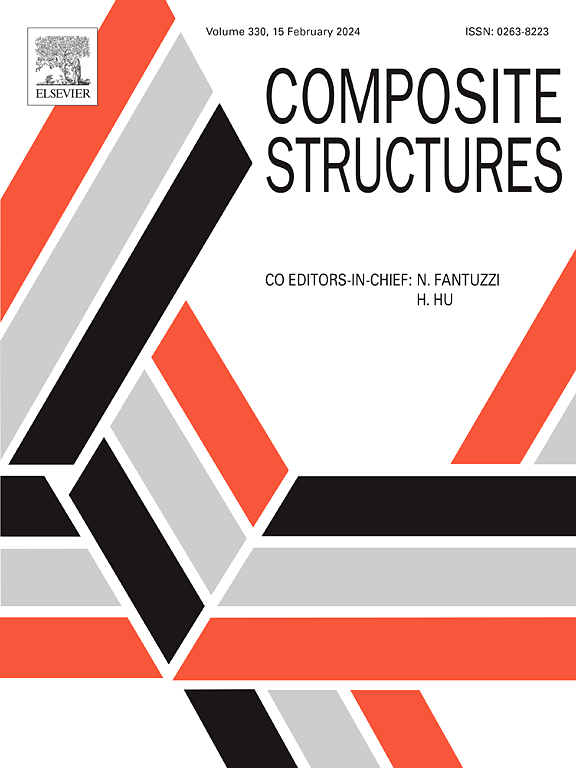复合材料层合板低速冲击及冲击后压缩的显式有限元分析
IF 6.3
2区 材料科学
Q1 MATERIALS SCIENCE, COMPOSITES
引用次数: 0
摘要
采用基于浮动节点法(FNM)的显式有限元(FE)框架,对复合材料层合板的低速冲击(LVI)和冲击后压缩(CAI)进行了数值模拟。在三个LVI和一个CAI案例中,比较了显式FNM模型和隐式FNM模型的性能。显式框架集成了先进的破坏模型来模拟基体开裂,纤维损伤和分层,而几何非线性通过更新的拉格朗日公式来解决。结果表明,显式FNM方法能准确预测载荷-位移行为、损伤演化和残余强度,与实验数据吻合较好,且计算效率较隐式方法有所提高。这些发现突出了显式FNM框架在有效和准确地分析离散裂纹模型(dcm)的复合冲击和冲击后性能方面的潜力。本文章由计算机程序翻译,如有差异,请以英文原文为准。
An explicit finite element analysis of Low-Velocity impact and compression after impact in composite laminates
This study investigates the numerical simulation of low-velocity impact (LVI) and compression after impact (CAI) in composite laminates using an explicit finite element (FE) framework based on the Floating Node Method (FNM). The performance of the explicit FNM model and its implicit counterpart were compared for three LVI and one CAI cases. The explicit framework integrates advanced failure models to simulate matrix cracking, fiber damage, and delamination, while geometric nonlinearity is addressed through an updated Lagrangian formulation. Results show that the explicit FNM method accurately predicts load–displacement behavior, damage evolution, and residual strength, demonstrating strong agreement with experimental data and improved computational efficiency compared to the implicit approach. These findings highlight the potential of the explicit FNM framework for efficient and accurate analysis of composite impact and post-impact performance with discrete crack models (DCMs).
求助全文
通过发布文献求助,成功后即可免费获取论文全文。
去求助
来源期刊

Composite Structures
工程技术-材料科学:复合
CiteScore
12.00
自引率
12.70%
发文量
1246
审稿时长
78 days
期刊介绍:
The past few decades have seen outstanding advances in the use of composite materials in structural applications. There can be little doubt that, within engineering circles, composites have revolutionised traditional design concepts and made possible an unparalleled range of new and exciting possibilities as viable materials for construction. Composite Structures, an International Journal, disseminates knowledge between users, manufacturers, designers and researchers involved in structures or structural components manufactured using composite materials.
The journal publishes papers which contribute to knowledge in the use of composite materials in engineering structures. Papers deal with design, research and development studies, experimental investigations, theoretical analysis and fabrication techniques relevant to the application of composites in load-bearing components for assemblies, ranging from individual components such as plates and shells to complete composite structures.
 求助内容:
求助内容: 应助结果提醒方式:
应助结果提醒方式:


